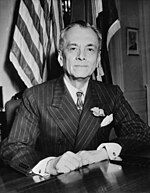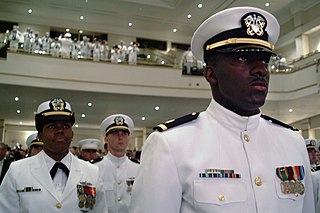
The Reserve Officers' Training Corps is a group of college- and university-based officer-training programs for training commissioned officers of the United States Armed Forces.

The United States Navy Reserve (USNR), known as the United States Naval Reserve from 1915 to 2005, is the Reserve Component (RC) of the United States Navy. Members of the Navy Reserve, called Reservists, are categorized as being in either the Selected Reserve (SELRES), the Training and Administration of the Reserve (TAR), the Individual Ready Reserve (IRR), or the Retired Reserve.

Georgia Military College (GMC) is a public military junior college in Milledgeville, Georgia. It is divided into the junior college, a military junior college program, high school, middle school, and elementary school. It was originally known as Middle Georgia Military and Agricultural College, until 1900. While GMC is a state-chartered and funded institution, its governance is not overseen by either the Board of Regents of the University System of Georgia or the State Board of the Technical College System of Georgia.
In the United States, a senior military college (SMC) is one of six colleges that offer military Reserve Officers' Training Corps (ROTC) programs under 10 U.S.C. § 2111a(f), though many other schools offer military Reserve Officers' Training Corps under other sections of the law. The six senior military colleges are:
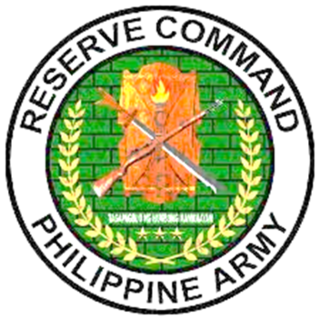
The Reserve Command is a major support command of the Philippine Army. It was created for the sole purpose of reserve force management, organization and Government Arsenal procurement.
The Citizen Armed Force Geographical Unit, variously called Citizens Armed Forces Geographical Unit, Civilian Armed Forces Geographical Unit and commonly referred to by its acronym CAFGU is an irregular auxiliary force of the Armed Forces of the Philippines focusing on anti-insurgency efforts in the countryside. As of 2022, an estimated 69,938 CAFGU troopers are active in the country, taking part in military operations alongside regular soldiers of the AFP.

The Penn State Army Reserve Officers' Training Corps is the ROTC department at The Pennsylvania State University. It is the largest branch of the ROTC program at the school, which also has Naval ROTC and Air Force ROTC. The Nittany Lion Battalion (NLB) is one of the 41 participating battalions in the 2nd Reserve Officers' Training Corps Brigade, also known as the Freedom Brigade. The brigade is headquartered at Fort Dix, NJ, and comprises ROTC programs in the North Eastern United States including CT, MA, ME, NH, NJ, NY, PA, RI, and VT.

The Naval Reserve Command (NRC), also known as NAVRESCOM or RESCOM, (Filipino: Pangasiwaan ng Panlaang Kawal ng Hukbong Pandagat) is one of the Philippine Navy's Major Support Commands created for the sole purpose of reserve force management, procurement, and organization.
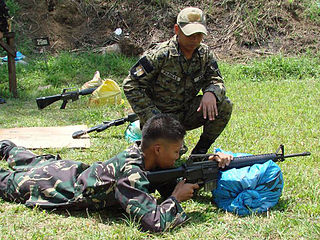
Reserve Officers' Training Corps (ROTC) in the Philippines is one of three components of the National Service Training Program, the civic education and defense preparedness program for Filipino college students. ROTC aims to provide military education and training for students to mobilize them for national defense preparedness. Its specific objectives include preparation of college students for service in the Armed Forces of the Philippines in the event of an emergency and their training to become reservists and potential commissioned officers of the AFP.

The Army Reserve Officer Training Corps (AROTC) is the United States Army component of the Reserve Officers' Training Corps. It is the largest Reserve Officer Training Corps (ROTC) program which is a group of college and university-based officer training programs for training commissioned officers for the United States Army and its reserves components: the Army Reserves and the Army National Guard. There are over 30,000 Army ROTC cadets enrolled in 274 ROTC programs at major universities throughout the United States. These schools are categorized as Military Colleges (MC), Military Junior Colleges (MJC) and Civilian Colleges (CC).
Reserve Officers' Training Corps in South Korea is a college-based officer training program which was established in 1961. South Korea's Conscription Law applies to males, aged between 18 and 35, although women are allowed to enroll in the ROTC as of 2010.

Conscription in the Philippines has been implemented at several points in the country's history. As of 2022, no mandatory conscription is in effect in the Philippines and military service is entirely voluntary as stated in the 1987 constitution. However, there have been calls for mandatory conscription by Vice President Sara Duterte, along with several Senators pushing for a bill to introduce mandatory Reserve Officers' Training Corps enrollment.
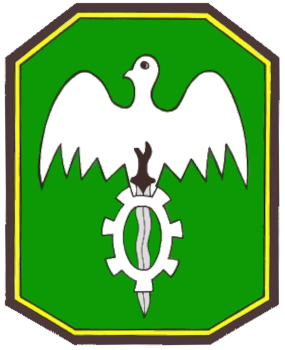
The 1st Regional Community Defense Group, Army Reserve Command is a line unit of the Army Reserve Command of the Philippine Army. It was created for the sole purpose of Reserve Force management, procurement, and organisation in the areas encompassing Northern and Central Luzon.
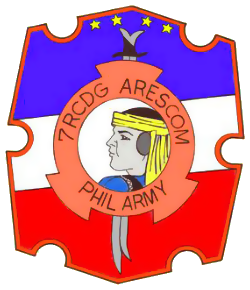
The 7th Regional Community Defense Group, Army Reserve Command; is a line unit of the Army Reserve Command. It was created for the sole purpose of Reserve Force management, procurement, and organisation in the areas encompassing Central Visayas.
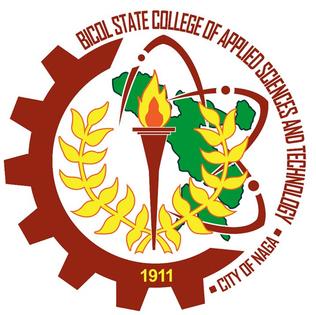
The Southeast Asian University of Technology (SEAUTech), formerly known as the Bicol State College of Applied Sciences and Technology (BISCAST), is a nonsectarian public state college in the Philippines. It is located along Peñafrancia Avenue in Naga City. The current president is Alex H. Navarroza.

The Junior Reserve Officers' Training Corps is a federal program sponsored by the United States Armed Forces in high schools and also in some middle schools across the United States and at US military bases across the world. The program was originally created as part of the National Defense Act of 1916 and later expanded under the 1964 ROTC Vitalization Act.
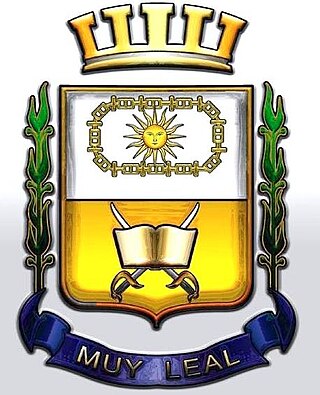
The University of Santo Tomas Golden Corps of Cadets (UST-GCC) also referred to as the UST ROTC Unit is a Reserve Officers' Training Corps unit implementing one of the optional components of the Philippines' National Service Training Program (NSTP) in the University of Santo Tomas. The NSTP is a civic education and preparedness program for college students, the ROTC component of which aims to provide military education and training to mobilize them for national defense preparedness.

The National Service Reserve Corps, also referred to by the acronym NSRC, is a unit composed of graduates of the Civic Welfare Training Service (CWTS) and Literacy Training Service (LTS) components of the National Service Training Program, a civic education and defense preparedness program in the Philippines. Members of this corps may be tapped by the state for literacy and civic welfare activities. In 2010 the NSRC was mandated to be accredited and mobilized for the delivery of disaster risk reduction programs and activities.
The Civic Welfare Training Service (CWTS) is one of three components of the National Service Training Program, a civic education and defense preparedness program for higher and vocational education students in the Philippines. CWTS activities "are contributory to the general welfare and the betterment of life for the members of the community or the enhancement of its facilities, especially those devoted to improving health, education, environment, entrepreneurship, safety, recreation and morals of the citizenry".
The Literacy Training Service (LTS) is one of three components of the National Service Training Program, a civic education and defense preparedness program for higher and vocational education students in the Philippines. The LTS is "a program designed to train students to become teachers of literacy and numeracy skills to school children, out of school youth, and other segments of society".
